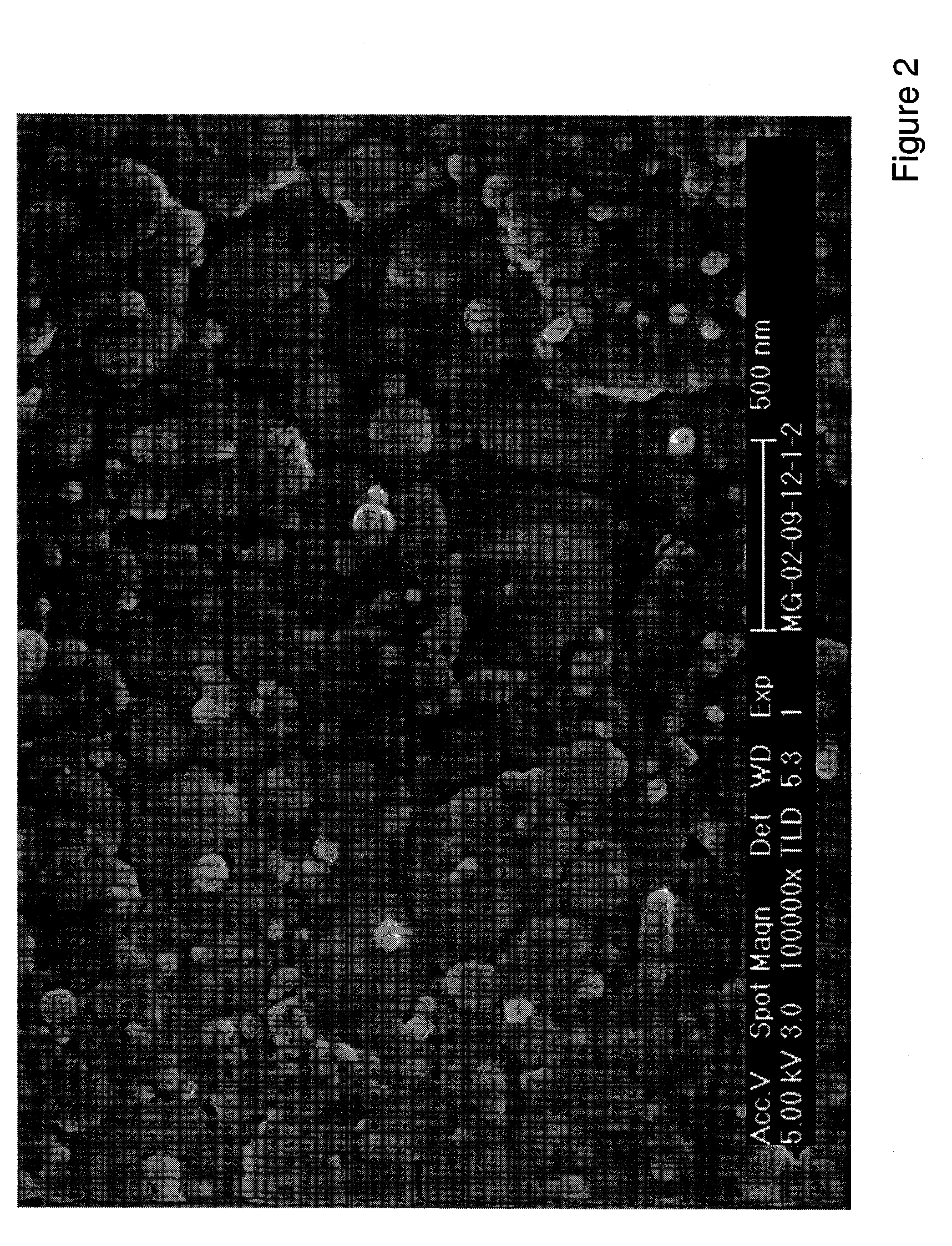Inks containing metal precursors nanoparticles
a technology of metal precursors and inks, applied in the field of new ink formulations, can solve the problems of metal-based ink formulations that are prone to oxidation, require integration and optimization, and are therefore relatively unstable, and achieve the effect of low cost and ease of production
- Summary
- Abstract
- Description
- Claims
- Application Information
AI Technical Summary
Benefits of technology
Problems solved by technology
Method used
Image
Examples
example 3
Copper Particles Obtained by Bead Milling with 0.1 mm Beads
[0174]The particles obtained in Example 2 were further milled using 0.1 mm beads. The particle size decreased to 115 nm
example 4
[0175]75 g of Nickel formate were mixed with 7.5 g of a cationic polymer (MW=2000) with 67.5 g DPM (Dipropylene glycol methyl ether). Then, the mixture was bead milled (WAB) to obtain nickel formate nanoparticles.
example 5
Mixture of Copper and Nickel Precursor Particles Obtained by Bead Milling
[0176]37.5 g of Nickel formate and 37.5 g of copper formate were mixed with 7.5 g of a cationic polymer (MW=2000) with 67.5 g DPM (Dipropylene glycol methyl ether). Then the mixture was bead milled (WAB) to obtain copper and nickel formate NPs.
PUM
| Property | Measurement | Unit |
|---|---|---|
| temperature | aaaaa | aaaaa |
| temperature | aaaaa | aaaaa |
| mean particle size | aaaaa | aaaaa |
Abstract
Description
Claims
Application Information
 Login to View More
Login to View More - R&D
- Intellectual Property
- Life Sciences
- Materials
- Tech Scout
- Unparalleled Data Quality
- Higher Quality Content
- 60% Fewer Hallucinations
Browse by: Latest US Patents, China's latest patents, Technical Efficacy Thesaurus, Application Domain, Technology Topic, Popular Technical Reports.
© 2025 PatSnap. All rights reserved.Legal|Privacy policy|Modern Slavery Act Transparency Statement|Sitemap|About US| Contact US: help@patsnap.com


